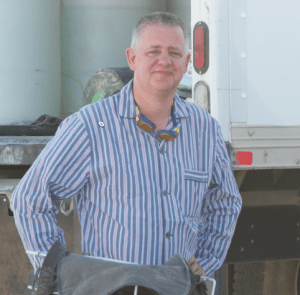This ia a guest post by Tim Panton, a senior engineer at Voxeo labs.
I’m in the middle of the desert in Nevada – a dusty, half-naked guy walks up to me:
– “You have working cell service here ?”
– “Yes, we built our own.”
– “I have to make a call, can I use it?”
– “Sure.”
He makes a call to sort out a family emergency and then heads off back to his camp with a working mobile phone.
We are at Burning Man – an annual festival of ephemeral art and radical self-sufficiency.
It’s an odd place to find a soft middle-aged English phone geek. I’m still a bit surprised to have found myself there.
There is literally nowhere else on earth where you can run an experimental mobile phone network with a potential 30,000 users and get away with it. Nowhere else can you learn so much in as short a timeframe about people’s relationship with their mobile phones or what makes a mobile network tick. I’m exceptionally grateful to my friends at Range Networks who run the Papa Legba camp, designed the OpenBTS software we used to build the network and who provided most of the hardware too.
We provided a service covering >30k people over ~7 sq km from 5 basestations.
Try that with wifi.
Many of those calls were in-network calls or SMS messages, meaning someone at Burning Man was communicating with another Burner in the desert. These were typically logistical calls, “Meet me by the giant steampunk octopus,” or “we need 6 more bags of ice.” In addition, we registered over 7,500 calls through Tropo out to the “default world”. Inside the Papa Legba network, each user had a unique, self-assigned 6-digit phone number, with Tropo providing the critical bridge between our experimental network and the global carrier network that powers the rest of the world’s communications.
Every year we do this, we learn new lessons. Last year we learned that a cloud telephony API (Tropo in our case) works best if it is run inside the carrier’s network, a lesson we applied when we partnered with Deutsche Telekom who recently announced that they are offering the Tropo API on their network. This means that, for the first time ever, over 100k Tropo developers can now run their apps (with no changes) inside a carrier network.
This year’s lesson is about customisation, we used our position inside the network at Burning Man to change the user’s experience of the phone service, we created web-style metrics to see what worked and what doesn’t. You simply can’t do that stuff if you aren’t right in the centre of the network, being on the edges doesn’t cut it. We have already been busy applying that knowledge to the Tropo APIs we offer our customers and partners in the near future.
By bringing web-style user-centric thinking to the telephony space, we allow web developers to manage realtime audio sessions just as easily as they do web sessions, often in the same app. Our work on the Phono project and with webRTC is also directed to this goal, getting the vibrancy and fun of web development into the world of realtime communication, because sometimes (as the dusty guy above will attest) only voice communication will do the job.
If you want to know more about the technicalities of the Papa Legba network there is a wiki full of geekery – or listen this Friday at 12pm EST to the weekly VoIP Users Conference call (VUC) where I’ll be talking about it with other telephony geeks.
(Images Copyright Mark Peterson, Johnny Diggz)

